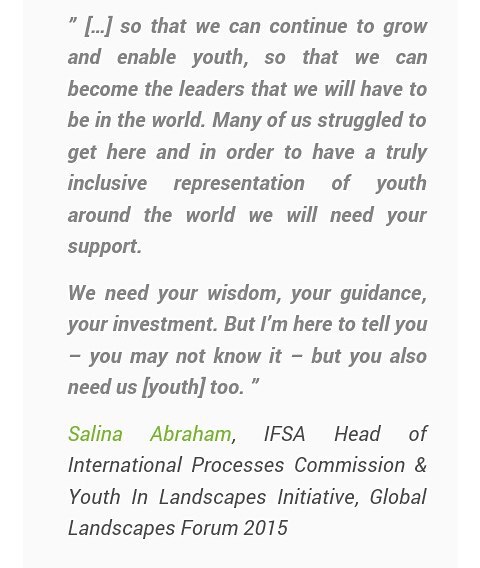Walking in to the Moon Palace Resort – the main venue of the 13th Conference of the Parties to the United Nations Convention on Biological Diversity (CBD)– my expectation were met and exceeded as government officials, non-governmental organizations, civil society, indigenous people and youth convened in support of the most important international framework for the conservation and protection of biodiversity.
The energy was great! I could hear the laughter of reconnecting delegates in the hall, the monotony of the plenary from Coba/Tulum rooms, and the panic from one woman not able to find a Conference Review Paper on the CBD website.
The environment was exciting, even more so, the level of youth participation. During the first week of COP, we were able to listen and connect with many young people and youth led organizations.
Our first connection was made with our Caribbean friends, Adrian and Jamilla of the Caribbean Youth Environment Network (CYEN). With representation in 18 territories, the CYEN is the largest youth organization in the Caribbean.

Through a mutual friend, we met with representatives of the Youth 4 Wildlife Conservation, Cecile and Josephine. Youth 4 Wildlife Conservation is a fairly new initiative which aims to serve as a platform for youth participation in wildlife conservation more specifically, the Convention on International Trade in Endangered Species of Wild Fauna and Flora (CITES). Cecile and Josephine showed an infectious enthusiasm for understanding the COP process and connecting youth under a common purpose.

On Friday, the Global Youth Biodiversity Network organized a side event entitled, “Youth contributions towards mainstreaming of biodiversity and the achievement of the Aichi Biodiversity Targets”. The side event showcased the contributions of young people and youth led organizations from around the globe in the achievement of the Aichi targets. Despite having been one of the last side events of a long week, the room was jam packed. This reemphasized how absolutely necessary it is to include youth in these processes; we have the vitality to bring continuous innovation to the problems facing our world today.
Some organizations showcased during the side event include:- Japan Biodiversity Youth Network
- German Youth Association for the Protection of Nature (NAJU)
- Mexico Youth Biodiversity Network
- Engajamundo
- Centro Urbes
How did it happen? How did all these young people get as passionate as they are? I think Simangele Msweli, a South African delegate answered this quite well in a recent Facebook post.
“2007, when I was 14 years old, I was part of the “kids and parks” program. An initiative to teach kids about biodiversity and have excursions for them to experience it’s importance and value first hand. Little did I know, that 9 years later, I would have presented my own research in local, national and international conferences. Neither did I know I will be seated in the highest decision making convention for biodiversity.
This is the power of investing in young people. This is the power of education. Not only does it benefit one person but the nation at large. We still want fees to fall and the nation to rise. I hereby lobby all of you, to invest in young people […]”
All these young people have had something that pushed them in the direction of conservation, something that eventually led them to want to engage in solving one of the world’s most pressing problems, and to be the voice of future generations. If you helped to make this happen through even the smallest bit of support/investment, the world will thank you for it.
 By Denver Cayetano]]>
By Denver Cayetano]]>